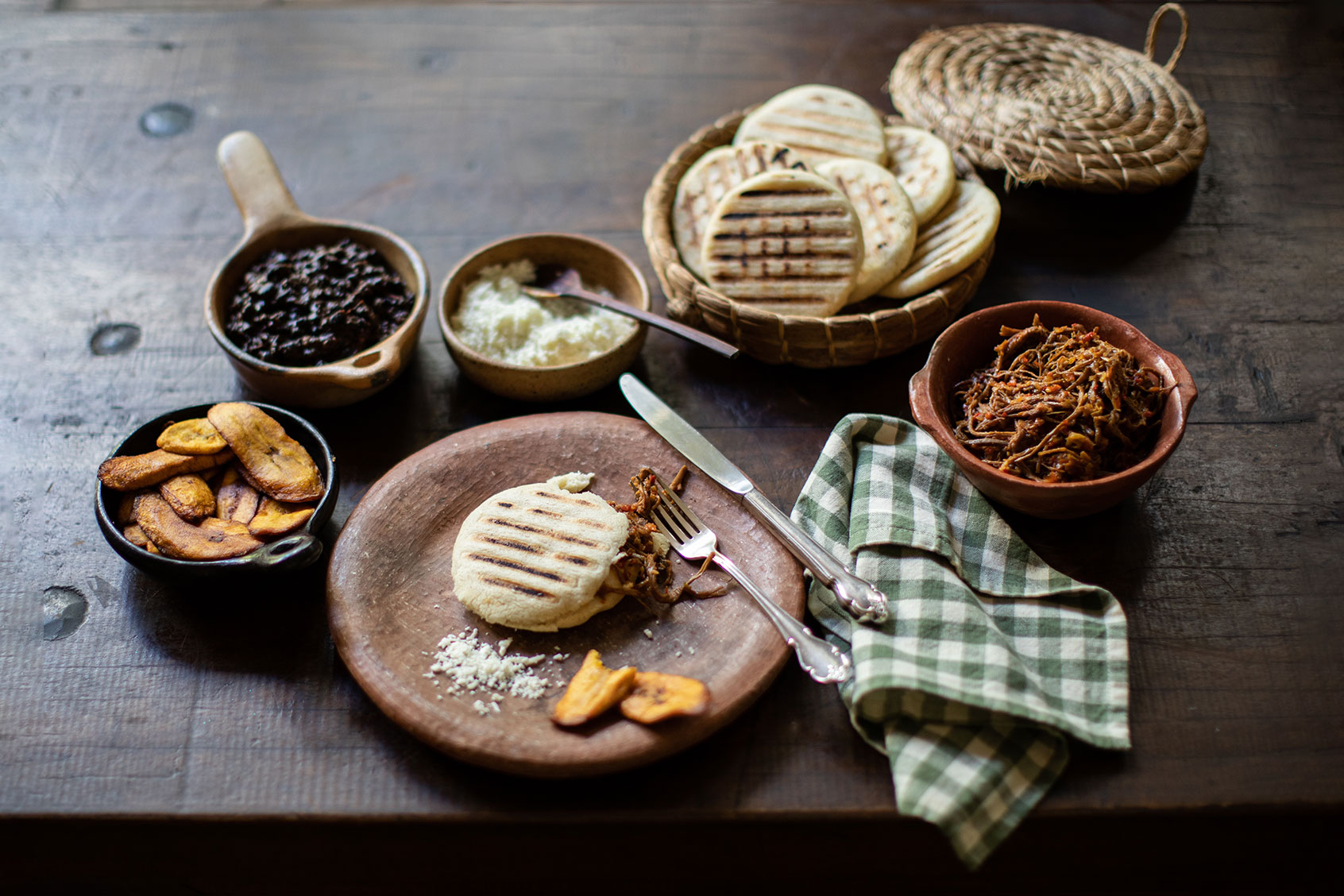When I was in high school, I would often visit my friend and her mom would — without fail — make arepas. I am fairly certain she made them every single time I ever came over.
Essentially a corn cake, they were pillowy and soft, with a crisp exterior and a slight corn flavor; there’d always be a heap of them on the dining room table alongside whipped butter and shredded mozzarella cheese. These after-school snacks have become embedded in my food memory; unfortunately, no arepa I’ve ever had at a restaurant (or at anyone else’s home) has ever measured up to these.
I’m indebted to my friend’s mom for introducing me to such a wonderful food.
While arepas may not be as widely recognized as some other appetizers, they are a beloved food throughout South America that are nourishing, incredibly flavorful, wildly customizable and even naturally gluten-free. They come together in almost no time and with only four ingredients, making them a truly versatile and dependable food.
In order to further delve into the lore, history and culinary aspects of arepas, Salon Food spoke with Irena Stein, author of the new cookbook “Arepa: Classic and Contemporary Recipes for Venezuela’s Daily Bread” and founder of Alma Cocina Latina restaurant in Baltimore, Md, who discussed how she grew up eating them, how they are still important in her daily life and how easily you could make the simple, perfect food at home.
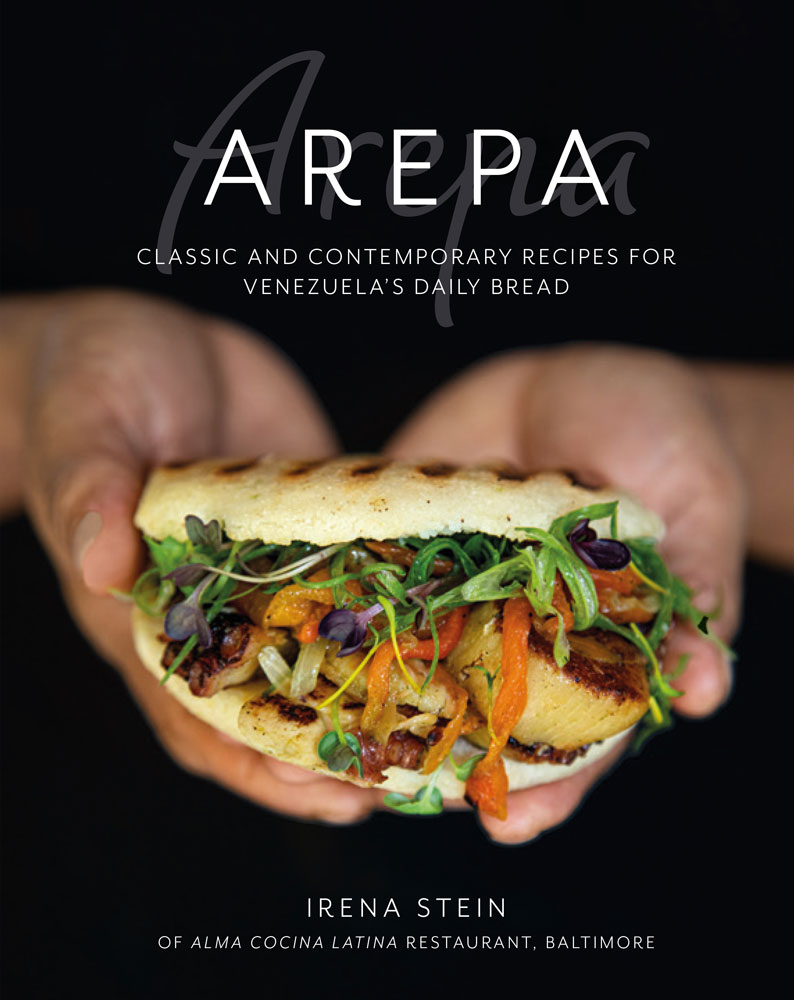 Arepa, book cover (Irena Stein)
Arepa, book cover (Irena Stein)
The following interview has been lightly edited for clarity and length.
What originated your interest in arepas? Do you remember your first bite of one?
I am Venezuelan, so my interest in arepas — or rather — my love for arepas, started in childhood. Most Venezuelans eat arepas daily and they start at breakfast. Kids eat before or on their way to school.
What led you to develop and write a cookbook focused on arepas?
My interest in writing a book about arepas stemmed initially from the consistent reactions of surprise, satisfaction and joy from many of our guests that have eaten them in our Baltimore establishments (Azafrán at Johns Hopkins University and at our restaurant Alma Cocina Latina).
I have also witnessed the profound discontent when arepas were discontinued from our menu, to the point of receiving threats of boycott from our regulars! These observations made it clear that there was a deep love and interest in arepas in our own city past many people were just getting introduced to them for the first time.
Aside from these personal direct observations, the popularity and growth of the arepa around the world is increasing every year. This recent phenomenon truly started with the mass migration of more than 7 million Venezuelans in the last decade, due to the extreme hardships of hunger and lack of medicine in their country of origin.
10 to 15 years ago, arepas were unknown to the majority of people outside Latin America. Now, they are not only familiar in many foreign countries, but they are very loved.
It’s often said that arepas are a very, very, very old dish, dating as far back as the origins of corn, perhaps up to 3000 years ago in South America. What did you find out about their history in your research?
The historic reference of Miguel Felipe Dorta Vargas, author of the book “Viva la Arepa!”, explains that the archeological excavations on American soil suggest that the oldest findings of fossilized corn pollen were found in what is now Mexico City, dating around 80,000 years. The corn then migrated to different parts of the Americas; to the North, 5,000 to 6,000 years ago and to South America 3,000 years ago. In our particular region, the corn was introduced around what is now the border between Colombia and Venezuela.
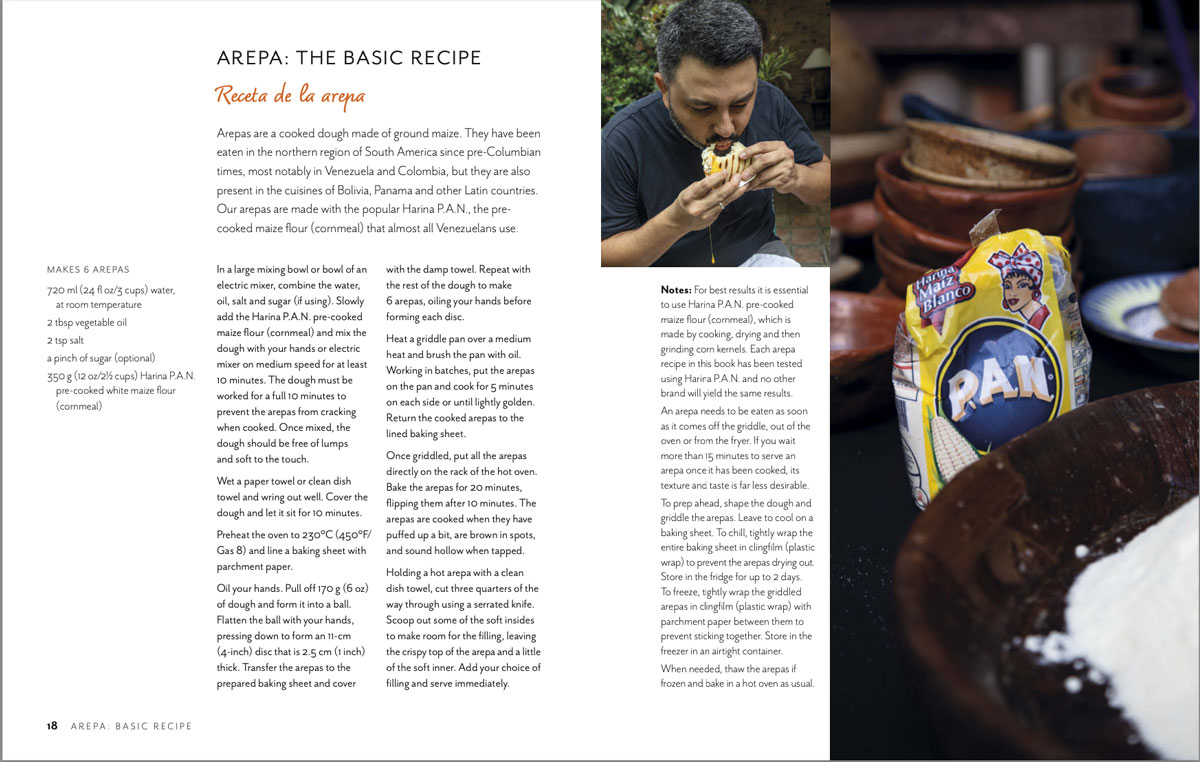 Basic arepa recipe from cookbook (Irena Stein)
Basic arepa recipe from cookbook (Irena Stein)
Arepas are naturally gluten-and-dairy-free, making them an excellent food for so many and they also only require 4 ingredients. What are your cooking tips for beginners?
There are many online recipes on how to make an arepa. Not all of them get you to really good results. Some of my tips include:
1.After making the dough (please use Harina PAN, available everywhere), griddle the arepas till they are golden on each side.
2. But, what some omit in their recipes: It is important to then put them in the oven at 450 degrees, for 10 minutes on each side, so they turn crispy on the outside and they slightly puff up.
3. Eat them within 15 minutes of taking them from the oven! If not, they become soggy and hard. Not good!
4. After they are ready, do not cover them because they will sweat and lose their crispiness.
Want more great food writing and recipes? Subscribe to Salon Food’s newsletter, The Bite.
What are your favorite arepa toppings, mix-ins, flavors and spreads?
My desire for the arepa fillings depends on the day and the time I am eating them. One has to follow our cravings for the things we want to eat that day! One day we desire chicken, another fish, another vegetarian. But typically for breakfast, I love very simple ones. I make them simply with cheese, or add plantains, cilantro and avocado.
For lunch or dinner, I prefer a more filling arepa. I love using leftovers, playing with sauces and herbs for a completely new meal. It is a perfect way to avoid food waste!
The arepas that I’m most familiar with are Colombian. What differentiates a Venezuelan arepa from a Colombian, Bolivian or Ecuadorian arepa?
-The Venezuelan arepa gets filled with whatever food you want.
-The Colombian ones are more often used as an accompaniment to a meal. They are larger and flatter. Sometimes the dough is mixed with cheese and then grilled and sometimes they add cheese in the middle of the dough and then cook them.
-In Bolivia, arepa doughs are mixed with cheese as well before cooking and instead of using water in the dough, they use milk.
-In Ecuador, I have read that in the magical town of Patate, they add squash, cheese and honey.
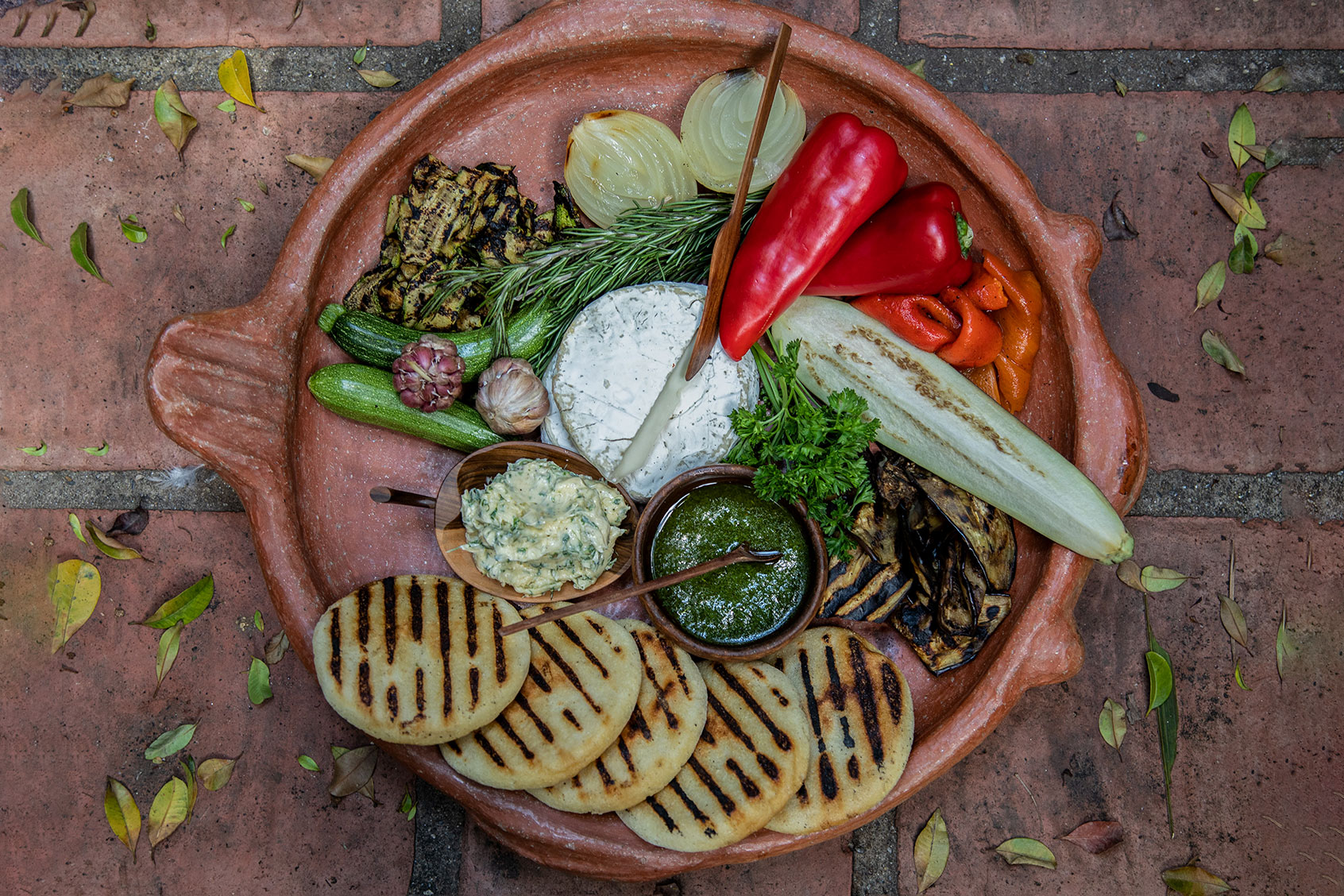 Arepa cabra y vegetales (Irena Stein)
Arepa cabra y vegetales (Irena Stein)
What recipes in the book are you proudest of?
Eduardo Egui, author of the arepa recipes, says that the most outlandish one he created is the “Fried Black Pudding Arepa with Reina Pepiada and sweet red pepper purée“. He also mentions the Korean-inspired arepa with fried pork and kimchi.
Aside from being proud of offering not only classic arepas, he is proud to present arepas filled with foreign flavors, to show how easily it adapts to every culture around the world. A true ambassador of our culinary legacy.
Do you have a preference for savory versus sweet arepas?
Savory arepas are much more common and more consumed than the sweet ones. The traditional sweet one really known across Venezuela is made with anise and melao (popular raw sugar syrup made with spices). The recipe is in the book as well.
Hector Romero says that “the sweet arepa appears in various dishes from the Andes., specifically in the state of Trujillo. The combination of spices and sweet flavors are often found in sweets and desserts. The creation of other sweet arepas is a recent tendency among some chefs.
We need your help to stay independent
Is there a recipe in the book that you think is ideal for an arepa novice? Conversely, are there some more complicated recipes that arepa aficionados might enjoy working on?
The easiest arepa is the one filled only with cheese. If you have a Latin store nearby, you can buy Mexican white cheese which is most similar to what we would typically use as the filling. These markets will provide you with many ingredients you can use to make the recipes of the book. They are also very interesting. You might get inspired by new ingredients found in the store and explore cooking with new flavors!
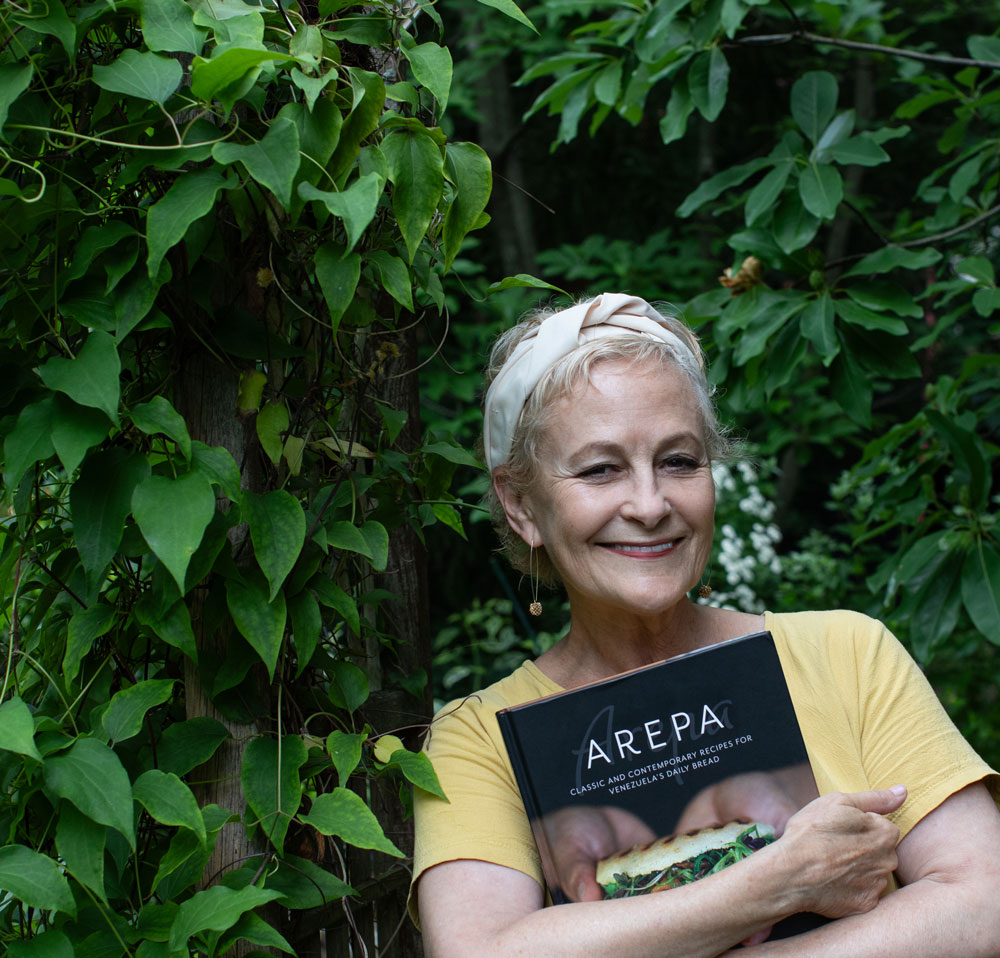 Irena Stein with her cookbook, Arepa (Irena Stein)
Irena Stein with her cookbook, Arepa (Irena Stein)
The Alma Cocina Latina menu is beautiful! Do you often have dishes containing an arepa component on the menu?
Our menu at Alma is presenting arepas for brunch at the present time, but not for dinner. We do have Chicharrón arepitas to start your meal, a favorite of most guests.
Is there anything else you would like to add?
We are eagerly working on a long awaited arepa bar next to Alma, opening in the Fall. For everyone’s delight!
